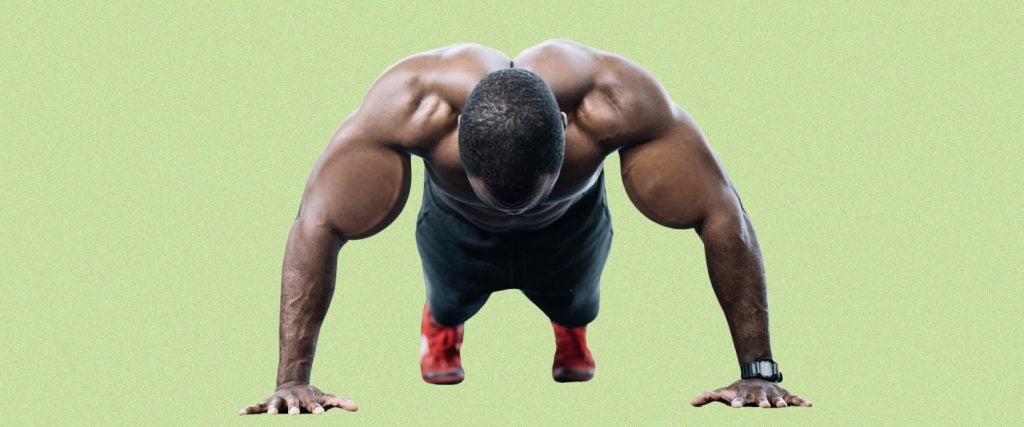One of my most memorable weekend weight-room exchanges as a personal trainer occurred when I was in the rear weight room of the Bally’s Executive Club, and a rather slight gym member timidly approached me while I was doing pull-ups with a 30-pound dumbbell between my legs.
“Excuse me, sir,” the man said politely. “I was just wondering, what muscles do pull-ups work?”
I was delighted to have such a question asked of me by this brave gentleman, primarily because I was used to interacting with male gym goers who would rather die than ask a question that would betray the fact that they didn’t know all there was to know about fitness. In response to this kind soul’s question, I replied thusly: “Pull-ups primarily work the muscles of your back, like your upper back, like your lats, and if you vary the positioning of your grip, you can target different parts of your back, and also train your biceps as well.”
It was at this moment when a fiftysomething gym know-nothing wandered over and chimed in. “It will give you a big chest, too!” he interjected.
“Will it?” the initial questioner asked me with a confused countenance.
“No,” I said, shaking my head as the intruder’s confident smile was turned upside down.
“Well, then how come I feel it in my chest?” the interloper insisted.
How come he felt pull-ups in his chest?
Because the primary movers of an exercise aren’t the only muscles in play during those movements.
Let’s say that I grab a hypothetical barbell and decide to start cranking out a set of standing military presses. I hoist that bad boy over my head, and I immediately stabilize the weight by bracing with my midsection — including my abdominals — and also with my legs, including my quadriceps, hamstrings and glutes. The entire time that my deltoids are pumping that bar up and down with some assistance from my triceps, my abs and legs are working dutifully to further support the overhead weight and to keep me locked rigidly to the floor.
Does this mean standing military presses are an ab and leg exercise? Not in any way that a reasonable person would grant you credit for. That would be like expecting your physics and chemistry classes to count as a math credit. Just because you use math in the execution of what you learn in your science courses, that doesn’t make them math classes, and just because you might indirectly use your legs during some of your upper-body lifts, that doesn’t automatically transform those lifts into effective leg exercises.
So what about push-ups? Do they work the biceps?
Not in any way that will enable your arms to better fill out a shirt sleeve.
Your elbow is a hinge joint, and your biceps’ time to shine is when they’re engaged in the act of pulling something along that hinge, either against gravity, or against an external force. While there is such a thing as pulling with your triceps, which is dependent upon the direction of the force being applied and the position of your hand, there is really no such thing as pushing something with your biceps.
Keeping this in mind, when you perform a push-up, you’re lowering yourself to the ground in a controlled fashion during the eccentric phase while bracing primarily with the muscles of your chest and triceps, and then you’re pressing yourself upward during the concentric phase to achieve a maximum contraction at the peak of the movement, also through your chest and triceps. At no point in the push-up process are your biceps experiencing either a maximum contraction or a peak contraction, so we can’t rightly say that push-ups work the biceps in any meaningful sense. To that end, I’d be willing to bet that no one has ever cranked out 100 push-ups and then complained about how tight their biceps felt afterwards.
In this sense, push-ups are like a group project where two people do 85 percent of the work, one person does 14 percent of the work and a final person signs their name to the project but contributes almost nothing of consequence toward the final product. Your biceps are the free-rider of the push-up group: They might trick you into thinking they’re involved because everyone else around them is doing something, but don’t be fooled. If you’re relying on push-ups to train your biceps, you’re going to be disappointed.
Now drag yourself over to the pull-up bar to give your biceps an opportunity to properly pitch in and help out, because if you do that exercise properly, they’ll have no choice.

